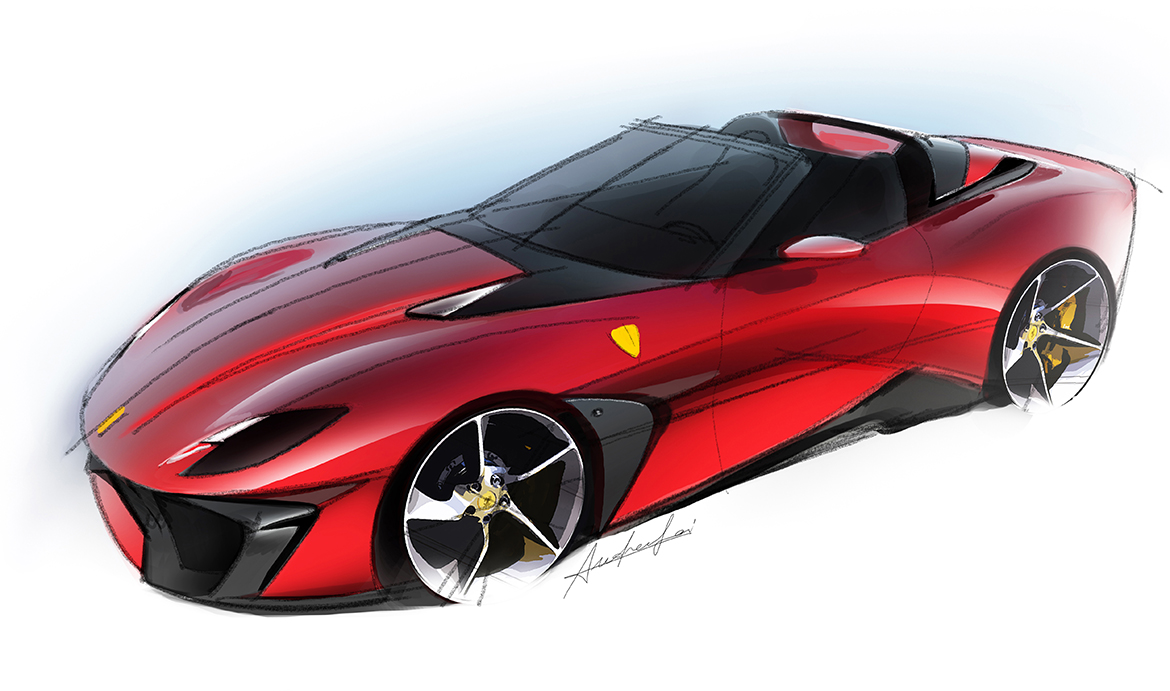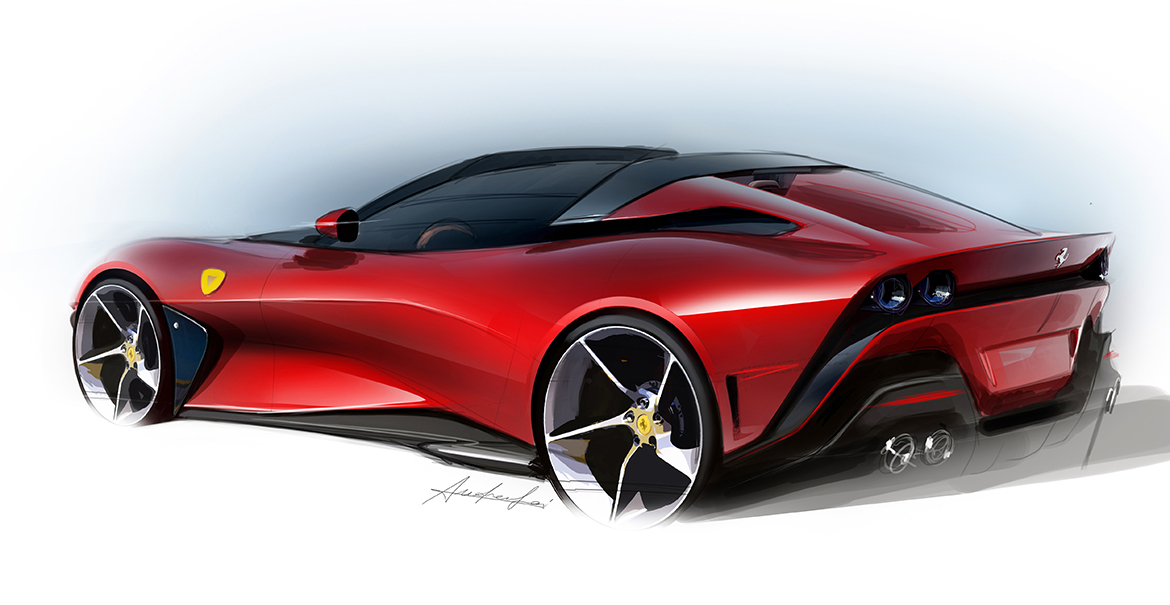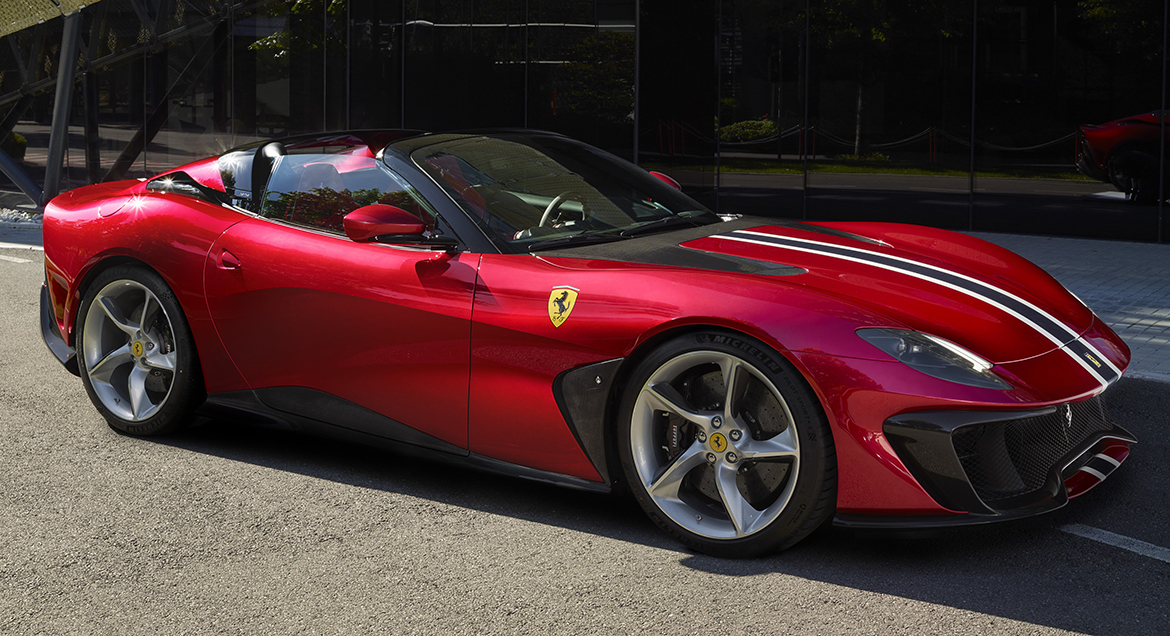It’s called the SP51 and it’s the latest one-off from Ferrari, the Maranello-based manufacturer’s most exclusive segment that builds cars from the specific requests of a few very lucky customers. The SP51, designed by the Ferrari Style Centre under the direction of Flavio Manzoni, is a front-engined V12 spider based on the 812 GTS from which it inherits its layout, chassis and engine. Its main peculiarity, identifiable from the first glance, lies in the total absence of a roof, which makes it a roadster in every way, thus accentuating its sporty character and its ability to excite both at the sight and during open-air driving.
The styling of the car is powerful and harmonious thanks to its undulating and muscular surfaces, devoid of any discontinuous elements. The mouldings are sinuous, modern and sensual, thanks also to the extensive use of exposed carbon fibre elements on the exterior and interior. One of the elements that will catch the eye of anyone approaching the SP51 is Rosso Passionale, a new triple-layer colour developed specifically for this car. This shade gives the car an elegant and authoritative character, the personality of which is further enhanced by the white and blue longitudinal livery inspired by a legendary 1955 Ferrari 410 S but which, in this interpretation, runs through the car to the interior.
At the front, noteworthy are the redesigned headlamps that give the SP51 a strong and unmistakable identity. The rear view is dominated by an arched theme with the headlights set below the spoiler. Immediately behind the passenger compartment are two hump-shaped elements whose visual perception is softened by deep hulls made of carbon fibre. Between these two elements rests a transverse wing profile, also in carbon fibre, folded over the mouldings as if to caress them. The bridge effect thus obtained is vaguely reminiscent of a ‘Targa’ type car in which the flying bridge elegantly hides the anti-roll bar structures, in a distant wink at solutions used in the Ferrari Sport Prototypes of the early 1960s.
But it is on the interior that the laborious tuning process, followed step by step by the customer, has reached unparalleled heights. The personalisation of the interior was based on the choice of the dominant colour of the Alcantara that covers it, that same Rosso Passionale that was created ad hoc for the exterior of the SP51, and on the effective idea of giving continuity to the longitudinal livery of the exterior. In fact, the white and blue colours also appear on the central tunnel and on the band between the seats in the rear wall of the cabin, as well as on the stitching on the steering wheel, generating a total continuity between interior and exterior made possible only by the car’s roadster architecture.















